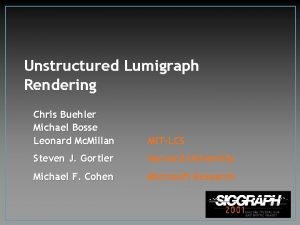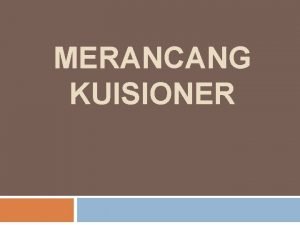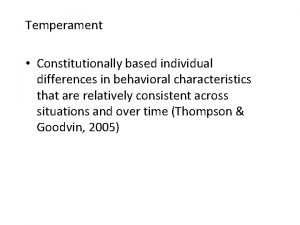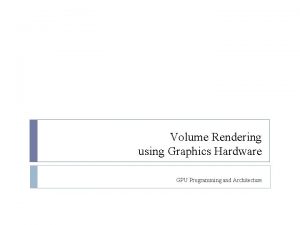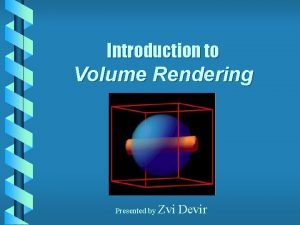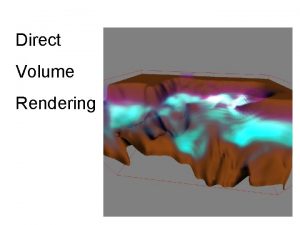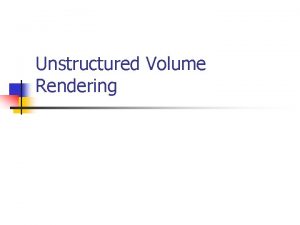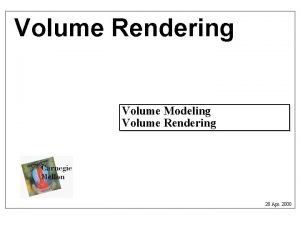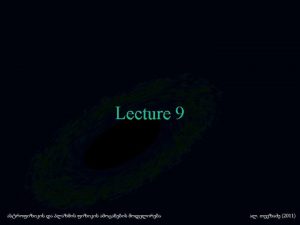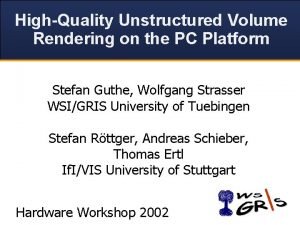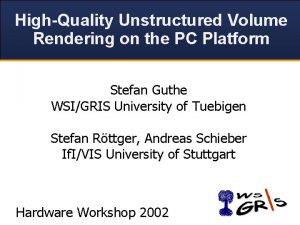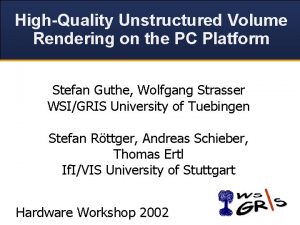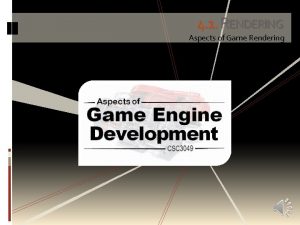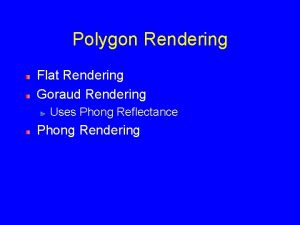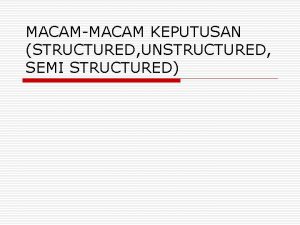Unstructured Volume Rendering Grid Types Structured Grids uniform














- Slides: 14

Unstructured Volume Rendering

Grid Types Structured Grids: uniform regular rectilinear curvilinear Unstructured Grids: regular irregular hybrid curved

Ray-Casting n For each ray n n n OR find intersection with first cell interpolate a color, opacity value while not outside the volume n find exit point of ray in cell n interpolate a color, opacity value n integrate opacity/color along ray within cell

Ray-Casting n Computationally more expensive n n n Point location is much more complicated (adjacency info is needed) Degeneracy in intersection test (hit vertex, edge etc) Interpolation could be more expensive (cell type dependent)

Projected Tetrahedra (PT) n n n Shirley and Tuchman 1990 object order (cell by cell) Utilize graphics hardware (Gouraud shading) makes sense if one cell projects to many pixels based on tetrahedral decomposition

PT – Basic Idea Final Image Back to Front Blending

PT - basic algorithm n n n Decompose volume into tetrahedral cells classify each tetrahedron according to its projected profile relative to a viewpoint find the positions of the tetrahedra vertices after the perspective transformation decompose projections of the tetrahedra into triangles find color and opacity values for the triangle vertices using ray integration in the original world coordinates scan convert the triangles on a graphics workstation

PT – tetrahedra decomposition n n Decompose volume into tetrahedral cells 5 or 6 tetrahedra are possible want least amount of computation for 5 - need to make sure that there will be no “cracks”

PT - tetrahedra n n for 5 - need to make sure that there will be no “cracks” I. e. edges need to line up properly

PT – projection & classification n n Classify each tetrahedron according to its projected profile relative to a viewpoint Based on the normal directions n Point toward (+) n Point away from (-) n Perpendicular to the eye (0) +++---+ --++ ++ - 0 --+0 + - 00

PT - Decompose n n Decompose projections of the tetrahedra into triangles Find the triangle vertex positions (tetrahedron vertex or edge intersection) after perspective projection

PT – Rendering n n n Render the tetrahedra (decomposed triangles) back to front Need to calculate the color and opacity at each triangle vertex – precomputed ray integration is needed Graphics hardware for Gouraud shading

PT – Vertex Color/Opacity n n n Zero opacity at “thin” vertices Data color at “thin” vertices Ray integration needed for “thick” vertices

PT – Ray Integration n Let’s do it on the board …
 Disadvantages of unstructured interviews
Disadvantages of unstructured interviews Chris buehler
Chris buehler Direct and indirect observation examples
Direct and indirect observation examples Contoh kuesioner produk makanan
Contoh kuesioner produk makanan Transforming unstructured data to structured data
Transforming unstructured data to structured data Structured and unstructured observation examples
Structured and unstructured observation examples Unstructured observation
Unstructured observation Teacher observation structured and unstructured
Teacher observation structured and unstructured Unstructured and structured data
Unstructured and structured data Structured vs unstructured observation
Structured vs unstructured observation Hp appsystem
Hp appsystem Upside down grid error
Upside down grid error Volume rendering tutorial
Volume rendering tutorial Introduction to volume rendering
Introduction to volume rendering Indirect volume rendering
Indirect volume rendering

